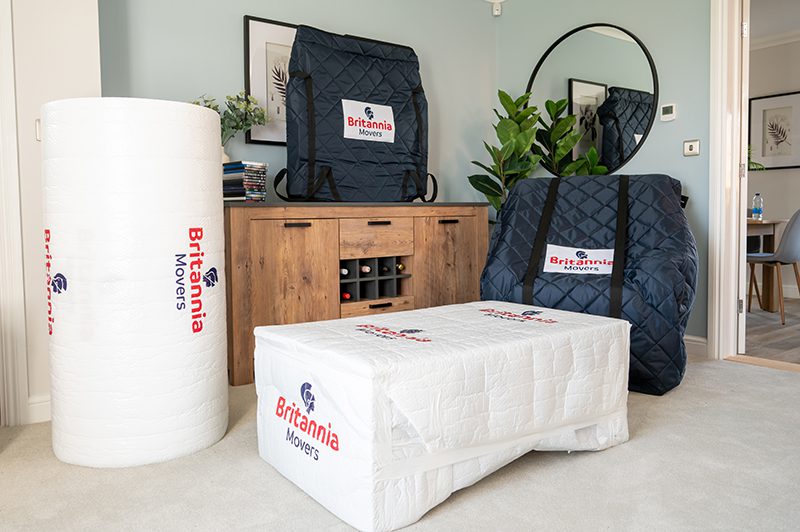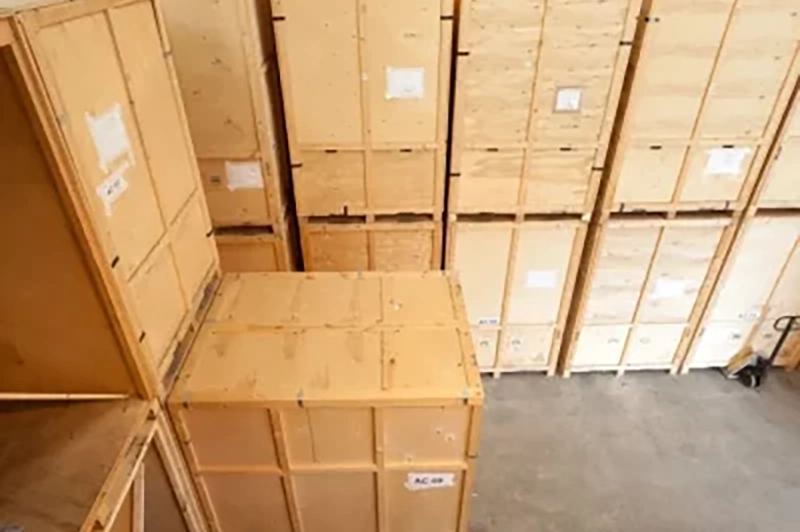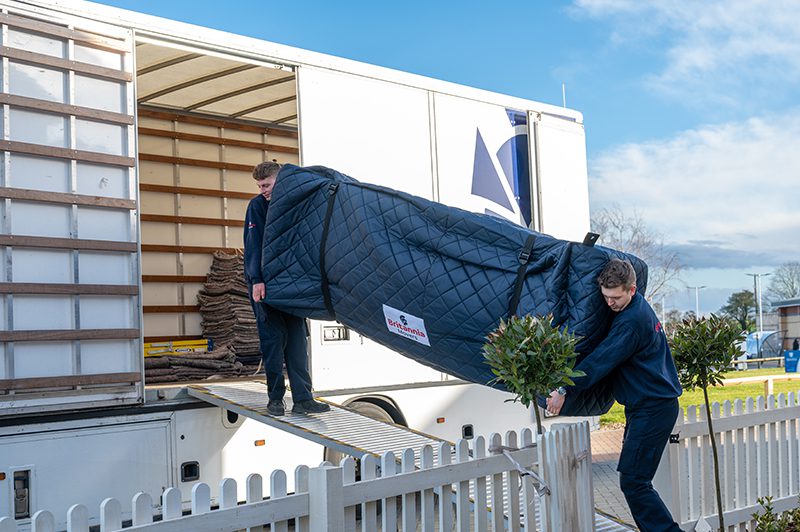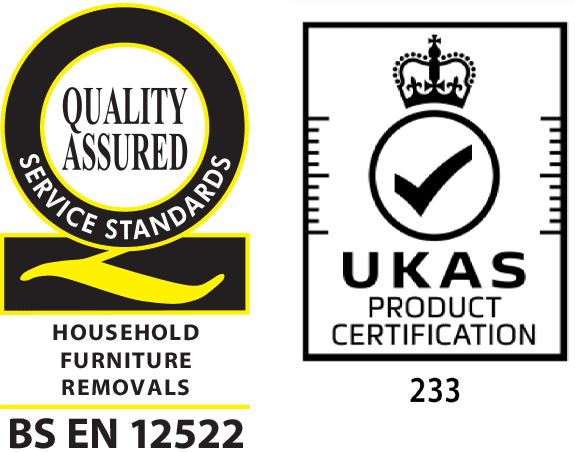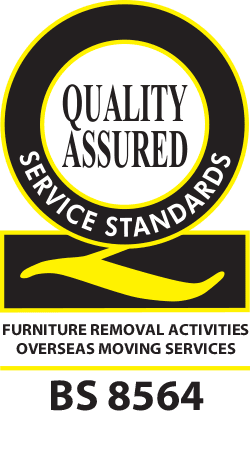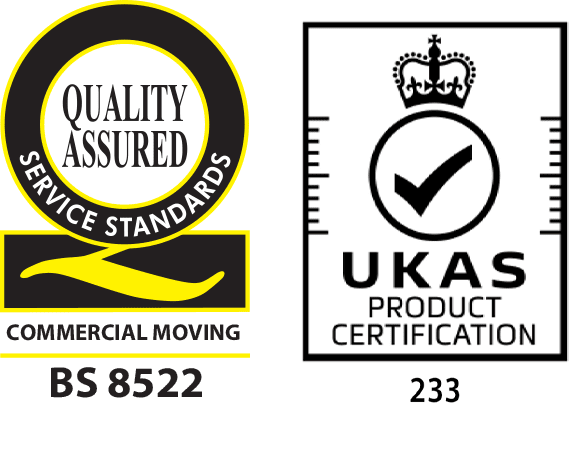Moving Tips
& Tricks
How To - Video Guides
We understand that moving can be a daunting task, which is why we’ve developed comprehensive moving guides to simplify the process for you.
Our guides are tailored to address the unique needs of various items, ensuring they are packed securely and arrive at your new destination intact.
Scroll through the playlists for more videos!
Britannia Movers App
Box Specific Guides
Protecting Fragile Items
Packing Pictures
We’re busy creating moving guides to help with your home relocation. Each video takes time to make, so please bear with us. Feel free to ask questions or check our social media for more moving tips in the meantime.
Thanks for your patience and Happy Moving! 🙂
More Moving Tips
1. Organise and Declutter
As soon as you know you’re moving, being organised and decluttering will allow you to save time, increase efficiency, and makes packing a whole lot easier.
You don’t realise how many affects you have accumulated over the years until you start going through the motions.
You may even be able to gain a few pennies by selling anything you no longer have a use for.
It’s a win, win if you ask me!
2. Getting a Quotation
Once your house is sold (STC), it’s a good time to start thinking about getting a quotation organised for your removal.
There are two types of quotations to consider. Most removal companies offer either, an in person survey or an online video survey.
It is important to get a proper quotation so that your removal company can tailor their service to your needs and avoid any problems on your move day. Don’t rely on just email or telephone communication!
3. Ready to start packing?
Make sure you give yourself plenty of time for packing as it takes a lot longer than most people anticipate.
Getting all packed in advance will help relieve pressure and stress. Whilst also being one less thing to worry about!
Try to use removal standard boxes, as they are strong enough to stack and are therefore, unlikely to cave in and cause breakages, whilst also being a good size for lifting.
4. Packing Basics
Secure the box with adequate tape on the base and top of the boxes. There should be at least two good lengths of tape on both, to avoid the box opening when carried. Do not interweave box flap
There are two sizes of boxes, medium and large. Make sure you are using the correct box size for the items you are packing. Medium boxes are for heavier items such as books, and tinned foods. Whereas large boxes are for lighter items such as toys, and bedding.
Do not overpack boxes so they bulge, are too heavy, or have items protruding, as they may be un-stackable on the vehicle.
Try to pack heavier items at the bottom of the box, and lighter items at the top.
5. Packing and Protecting Fragiles
It is best to wrap fragile items such as china and glass in white paper (not newspaper) rather than bubble wrap.
Plates and glasses should be individually wrapped and then stood on end in the box and not laid flat.
To pack fragile items in a box, add crushed paper at the base, then a tier of china & glass, then repeat ending with crushed paper at the top.
Identify clearly on each of the boxes the contents and in which room it is to be placed. Also, indicating whether they contain fragiles, liquids etc.
Pack lamp shades together in a box separate from any other items even if they have been wrapped.
6. Gather Important Documents
Gather all of your family’s important documents in one place well ahead of your move. You don’t want to misplace anything and these documents are hard to replace.
You’re going to need (among other things depending on your situation):
- Birth Certificates
- Insurance Information
- Passports
- Social Security Cards
- Your deeds
- School transcripts, certificates and diplomas
- Bank Information
- Driving Licences
- Vehicle Registration Documents
7. Moving to Store
Now is a good time to start running down your freezer. Save money and reduce waste by using everything up before your removal, perhaps with a big BBQ (There’s still time!) or fry up. New house, new food?!
Make sure you allow your white goods such as, dishwashers, washing machines and fridge freezers several days to dry out, as any moisture will cause mould within your storage. If you’re worried that there may still be some moisture, try adding some tea bags or a moisture trap.
Remember to keep all important documents with yourself such as passports, birth certificates etc. As you may not need them at that moment in time but what are the chances that you will need them once you don’t have access to them?
Make it clear to your removers what items you are taking and what is going to store. You can do this for example by putting all the effects that are staying with you in one room.
8. Dates
Choosing a date
Usually Fridays are the busiest day in removals and so, if you are looking to complete on a Friday it is even more important to stay in contact with your removal company and push your solicitor to allow for lots of time between exchange and completion.
Keep in contact with your chosen removal company
Removal companies aren’t able to hold dates for customers who haven’t exchanged, so it is extremely important to keep them in the loop once dates do get mentioned.
Don’t get your hopes up 🙁
We know that everyone is looking forward to being in their new home and it’s easy to get fixed on a date however, more often than not there’s a report missing etc which pushes the date back.
Usually dates get mentioned several times before you do actually exchange.
Exchange/Completion Dates
Exchange Date – This is when both the buyer and seller of a property signs the official documents to complete the sale/purchase.
On the exchange of contracts a completion date is set. You will not be able to change the completion date once exchange has taken place.
9. Pets and Children
Make sure you organise a babysitter on your move/pack day for both your human and fur babies.
As much as we would love to, we are unfortunately unable to transport any pets or livestock so, don’t forget to organise appropriate transportation for them.
Allocate a specific box for each of your pets and children, making sure that all their favourite belongings are dry and clean. You may want to keep this box with you so, you can make them as comfortable as possible in their new home, as it can be a stressful experience.
10. How to move plants to a new home
It’s hard to decide which plants from your garden/house to take with you to your new property. Try to determine which are most sentimental, how fragile they are and whether they would be able to survive at your new property.
If you’re planning to bring your belongings and plants into store, it is important to understand removal companies are unable to water and garden your plants.
If your plants are very sentimental or special then it’s a good idea to find them a babysitter for the duration that you’re in storage for.
Small house plants should be packed in open topped boxes and not left loose.
Do not water your plants on the day or the day before your removal, this is because they will still be wet during transportation and if they fall over or leak this could cause damage to your other boxes or effects.
11. Downsizing
Is less more? People downsize for many reasons, despite your situation, over the following weeks we will discuss a few steps to help put you in a better position ready for your move.
Measure out your new space, this may seem obvious but it is an important step in order to avoid any disruption on your removal day.
Make sure you have planned exactly what furniture is going where and measure the property to make sure your effects will fit.
Perhaps you could use this opportunity to redesign your space. When you are moving to a smaller property you need to make the most of the space that you have so, squeezing large pieces of furniture in may not be the most effective use of the smaller space you have.
Decluttering is quite possibly the hardest part of downsizing. It can be quite easy to make exceptions for items you may need in the future and end up moving your effects from one place to another.
There are some key questions you can ask yourself which can help you determine how to deal with the (overwhelming) decluttering process:
Have you used this item in the last 6 months?
Out of sight, out of mind? It can be easy to forget what you have when you don’t come across this effects on a daily basis.
Are you likely to need/use it often?
Is it sentimental?
Does it make you happy?
This is probably the most important question, as there should only be positive vibes in your brand new gorgeous home 🙂
12. A stress free unpack
Take a picture of your electricals before you unplug them. This will save you time and stress once you’re in your new home.
Keep all screws and cords in labelled sandwich bags for fast assembly. It’s then a good idea to keep all screw bags together in a box or securely tape them to the piece of furniture they relate to.
Any important keys, remotes or documents should all be kept together and clearly labelled to the relevant item.
Finally one for the jewellery lovers! Any long pieces of jewellery such as necklaces, use a towel and fold over the edges place the jewellery width ways and roll up. This prevents any tangles.
Packing
We offer a range of packing services to fit all requirements from a full packing service all the way to protecting just a couple of pieces.
Storage Solutions
We can offer different types of storage to suit all your requirements, from single items, to whole house and/or office effects, with no time limits.
Door to Door Removals
Our Door to Door Removals Service can include packing, loading, transportation, unloading and unpacking at the destination.
